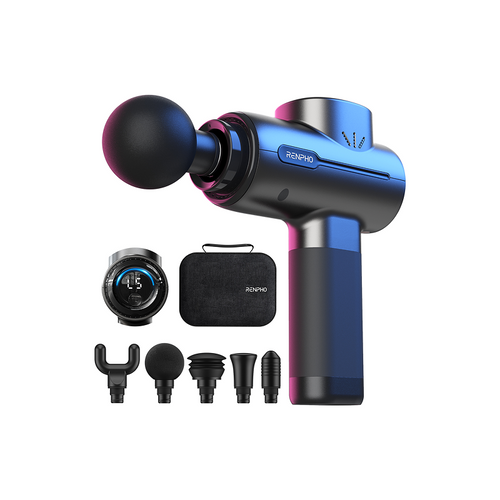Recovery Tips for Relieving Soreness Post-Workout

Stay tuned to our latest news
When you work out, you create micro-tears in your muscles. However, don’t let the name trick you into thinking it's a serious medical concern. It’s a usual thing to have after going through a workout routine. After you exercise, your body begins the necessary repairs, resulting in that familiar sore sensation in the affected area.
This process is necessary if you want to gain more robust muscles. As long as you continue to pursue your fitness goals, muscle soreness will always be there to greet you after a workout, especially if it involves high-intensity activities like jumping and jogging. And you can always expect your body to be better once the soreness ends.
While it is impossible to avoid sore muscles, there are ways you can follow to minimize the amount of soreness. Here are a couple of tips to help you with your next post-workout routine.
Stay Hydrated
Since sore muscles after a workout mean your body is working on the affected area, focusing on recovery and healing can significantly help if you wish to get over the discomfort as soon as possible. While it may seem obvious, staying hydrated is important for muscle recovery.
According to Nephrologist Steven Guest, MD., water helps transport nutrients to the cells in your body. Additionally, it also eliminates waste products and eases inflammation.
Before aiming for those 8 glasses of water every day, it is worth noting that not everyone shares the same daily recommended amount. Depending on your body and the intensity of activities, you might need more or less water than others.
Therefore, it is helpful to approach a dietitian to get the proper recommended water intake according to your needs.
Bonus Tip: Choose recyclable or reusable water bottles over plastic ones as they are cheaper in the long run and are generally safer for the environment.
Stock Up on Nutrients

Ensuring your body has enough water is not enough if you want to alleviate your sore muscles. You’ll also need to think about replenishing the nutrients your body needs to recover and repair your muscles.
Ideally, you should eat foods rich in carbohydrates, protein, Omega-3 and more. For example, Nutritionist Kristen Carlucci says honey can be beneficial in suppressing exercise-induced inflammation in the body.
Here are some examples of foods you should consider adding to your diet:
• Fatty fish (ex. Sardines, salmon, trout, etc)
• Eggs
• Whole Grain bread
• Milk
• Starchy vegetables (ex. Sweet potato, potato, corn, etc.)
By stocking up on these nutrients, you can relax knowing your body has enough supply to repair itself and make your muscles stronger than before.
Get Adequate Rest
While it may be common sense to rest after a tiring workout routine, you should know that sleep can also be helpful in alleviating your sore muscles.
For example, your body releases growth hormones every two hours during a prolonged sleep. These hormones are responsible for healing, recovery and growth.
Moreover, it can also promote the release of other hormones like insulin which are essential for protein synthesis.
Therefore, consider sleep a part of your muscle recovery routine. If you work out multiple times a week, providing yourself adequate hours every night is key to enjoying its benefits, such as muscle repair and recovery, explains Dr. Christopher Winter, owner of Charlottesville Neurology and Sleep Medicine clinic.
Do Some Light Exercises
At first glance, it may seem weird that moving your sore muscles will be helpful since they’re, well, sore. However, Exercise Physiologist Carol Torgan says that a few light exercises can actually be beneficial in speeding up muscle recovery.
Doing gentle activities, such as walking, cycling and even yoga can help increase blood flow, allowing your sore muscles to receive more oxygen and nutrients.
One thing you should remember when planning to do some light exercises is to never force your body. If your muscles feel too sore that slight movements make you incredibly uncomfortable, skip doing light exercises, rest and consider using a cold or hot compress instead.
Consider Buying a Massage Gun

If you’ve heard about massage guns before, you might be surprised to know that they can also be useful tools to alleviate sore muscles.
As you use one on the affected area, it can also promote blood circulation by allowing fresh blood to enter congested areas, giving way to new nutrients and oxygen. Think of it as giving that area the equivalent of breathing in fresh air.
Professor Dr. Tarnopolsky at McMaster University shares how massage helps your muscles adapt to the demands of increased exercise. Aside from helping your muscles heal, it can also help relax your body.
What’s more, is that there are numerous massage gun attachments you can use depending on the muscle groups you want to massage.
Are you looking to buy a new massage gun? If so, check out the RENPHO R3 Active Massage Gun and start enjoying its wonderful benefits today!
Renpho Health Tips
-

Your Guide to Massage Gun Heads for Muscle Recovery
Sep 20, 2022
Read more >
-

What Are The Benefits of a Massage Gun?
Aug 03, 2020
Read more >
-

How a Massage Gun Can Help Your Muscles Before a Workout
Sep 07, 2022
Read more >
-

Massage Guns as Percussive Therapy: Science & Benefits
Sep 06, 2022
Read more >
-

RENPHO Seasonal Staff Picks 2021
Dec 02, 2021
Read more >





